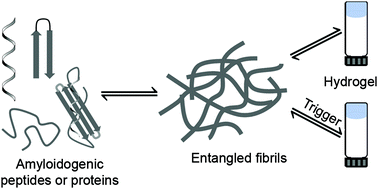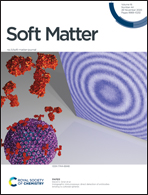Amyloids and their untapped potential as hydrogelators
Abstract
Amyloid fibrils are cross-β-sheet-rich fibrous aggregates. They were originally identified as disease-associated protein/peptide deposits. The cross-β motif was consequently labelled as an alien and pathogenic fold. Subsequent research revealed that the fibrillar aggregates were benign, and the cytotoxicity in the amyloid diseases was attributed to the pre-fibrillar structures. Research in the past two decades has identified the native functional amyloids in organisms ranging from bacteria to human. The amyloid-like fibrils, therefore, are not necessarily pathogenic, and the cross-β motif is very much native. This premise makes way for the amyloids to be used as biocompatible materials. Many naturally occurring amyloidogenic proteins/peptides or their fragments have been reported in the literature to form hydrogels. Hydrogels constitute one of the most interesting classes of soft materials that find application in diverse fields such as environmental, electronic, and biomedical engineering. Applications of hydrogels in medicine are particularly extensive. Among various classes of peptides that form hydrogels, the potential of amyloids is largely untapped. In this review, we have attempted to compile the literature on amyloid hydrogels and discuss their potential applications.

- This article is part of the themed collection: Peptide Soft Materials


 Please wait while we load your content...
Please wait while we load your content...